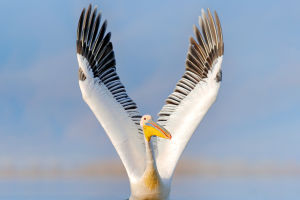Welcome, Lykkers! Meet the King of the Jungle – The Lion. Lions are known as one of the most iconic and majestic creatures in the animal kingdom.
With their impressive manes and powerful builds, they truly embody the title "King of the Jungle," despite living in open grasslands and savannas rather than jungles. Let’s dive into the world of these magnificent big cats and discover what makes them so special.
Hunting as a Team Sport: Lions’ Unique Social Structure
Lions are the only big cats that live in social groups called prides. A pride typically consists of up to three males, a dozen or more related females, and their cubs. What makes them unique in the wild is their cooperative hunting technique.
- Teamwork in Hunting: Lions are skilled predators, working together to take down large prey such as zebras, antelopes, and buffalo. The females often do most of the hunting, using stealth and coordination to ambush their prey.
- Roles in the Pride: Male lions defend the pride's territory from intruders, while females take on the role of hunting and caring for the cubs. This division of labor helps the pride thrive in harsh conditions.
Lions 101 | Nat Geo Wild
Video by Nat Geo WILD
Lions' Roar: A Sound of Authority
One of the most powerful features of a lion is its roar. It can be heard up to five miles away and is used for communication within the pride, as well as to ward off potential threats.
- Roaring for Territory: Lions use their roar to mark their territory and warn other lions to stay away.
- Communication Tool: Within the pride, roaring helps lions keep track of one another, especially when hunting or patrolling the vast savannas.
The Iconic Mane: Symbol of Strength and Status
A lion’s mane is not just for show; it’s a symbol of dominance and strength. Male lions with darker, fuller manes tend to attract more attention from females and command respect from other males.
- Attraction and Protection: A larger mane signals good health and strong genetics, which appeals to potential mates. It also provides some protection during fights with rival males, as it cushions blows to the head and neck.
- Age and Environment Impact: The size and color of a lion's mane can vary depending on age, genetics, and even environmental factors, such as the lion’s habitat and temperature.
Threats to the King: Conservation Concerns
Despite their regal status, lions are considered vulnerable due to habitat loss, human-wildlife conflict, and poaching. Their populations have dropped dramatically over the past few decades.
- Habitat Encroachment: As human populations expand, lion habitats shrink, leading to more conflicts between lions and humans, particularly farmers.
- Conservation Efforts: Various organizations, such as the World Wildlife Fund, are working to protect lions and their habitats by encouraging wildlife corridors, anti-poaching laws, and education about lion conservation.
Fun Facts About Lions
- Longest Naps: Lions are known to sleep for up to 20 hours a day, conserving energy for their powerful hunts.
- Cubs' Training: Lion cubs start learning to hunt at around three months old by watching and imitating adult lions in the pride.
- Lifespan: In the wild, lions live around 10-14 years, but they can live longer in captivity due to better access to food and medical care.
Roar into Adventure: Experience Lions in the Wild
Watching lions in their natural habitat is a bucket-list-worthy adventure. If you ever get the chance to visit a wildlife sanctuary or go on a safari in Africa, witnessing these majestic creatures up close is truly unforgettable.
Lions may be the kings of the savanna, but their future depends on continued conservation efforts to preserve their natural habitats and protect them from human threats. Let’s all do our part to ensure that the roar of the lion remains a powerful symbol of the wild for generations to come.


